2017 Ford Explorer Limited 4WD
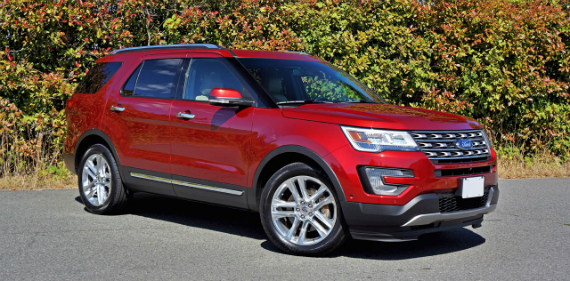
A best of all worlds family hauler
Ford gave its 2016 Explorer a mid-cycle update and it’s continued into 2017 more or less unchanged, its rounded edges sharper and less Range Rover like, albeit still paying unabashed homage to the luxury SUV brand’s iconic styling as if it were an Invicta Pro Diver 8926 trying to pass itself off as a Rolex Sub.
Scoff at Ford’s designers all you want, their plan is working. Last year the Explorer was the number one selling mid-size SUV in America, while it appears ready to set another modern-day sales record for 2017, the large mid-size model’s success seeming to know no bounds.
I must admit to liking the Explorer’s styling, in the same way a well-executed homage to a classic watch gets my respect, if not my investment. I’d sooner buck up for a vintage Doxa Sub, a Seiko 6309 or 6105-8110 Diver, or something really outside the box like an Oris Diver Sixty-Five, a vintage Dugena, or Eterna’s Kontiki than anything that resembled an icon (an actual Rolex Sub is a bit out of my reach for the time being, as is the Rolex Explorer that would’ve been the more apropos watch analogy), but blue-oval utilities are hardly the stuff of collectors’ dreams unless we’re talking the classic WWII GP or original first- and second-gen Broncos. Still, there are plenty of good reasons a current generation Explorer would be a welcome addition to any home.
Only a small digital reference to time sits in the top, center portion of my Limited 4WD tester’s large, colorful infotainment display, the Explorer’s interior being where Ford goes its own way as far as fashion is concerned. It’s an attractive layout, with acres of soft rubberized synthetic atop the dash and across each door upper (despite Ford claiming these as “leather-wrapped IP and door rollovers”), the door inserts finished in a nice stitched leather, and like most everything else in the class, all surfaces below the waist, seats aside, made from durable harder plastics.

Those seats are perforated leather in Limited trim, my version finished in Medium Light Camel beige, as were the door inserts and majority of lower interior panels, the look plenty upscale for this mainstream-branded mid-size SUV segment. Even more impressive, Dearborn uses genuine aluminum and “Ash Swirl” hardwood for the dash and door inlays.
Ford does a good job with switchgear and executes digital interfaces even better, the aforementioned infotainment touchscreen featuring the automaker’s latest Sync 3 operating system with bright, colorful, stylish graphics, plenty of apps, enhanced voice recognition, Siri Eyes Free, Apple CarPlay, Android Auto, accurate and easy to use navigation with detailed mapping, a 180-degree parking camera, and more. Just below, 390-watt, 12-speaker Sony audio provides excellent sound quality, this system supported by satellite radio as well as Bluetooth streaming audio. Quick access dual-zone auto HVAC controls can be found just below that, including three-way buttons for heating and cooling the front seats.
Directly ahead of the driver a heatable leather-wrapped multi-function steering wheel frames one of the more advanced semi-digital primary gauge clusters in the industry, a central speedometer dial the only analog element. While the leather of the latter feels substandard and the wheel’s rim not particularly comfortable due to awkwardly formed thumb spats, the color multi-information display to the left is brilliant, incorporating a small digital tachometer, fuel gauge, and temperature gauge that can be swapped around to a trip computer, four-wheel drive front/rear bias indicator, digital speedometer, or individual tire pressure monitor, while the right-side display plays host to audio settings, a digital compass and clock, etcetera.
The driver’s seat is 10-way powered and extremely comfortable, even providing four-way powered lumbar support that’s not available with a number of pricier premium-branded models, while overall ergonomics are excellent, or at least they were for my five-foot-eight medium-build frame, and visibility superb all around. My tester wasn’t upgraded with the $150 second-row console that splits the bench seat into two buckets, but Limited trim provides standard second-row seat heaters in the outboard window positions, while the third row gets a power-folding feature that’s really handy, especially for returning them to their upright positions.
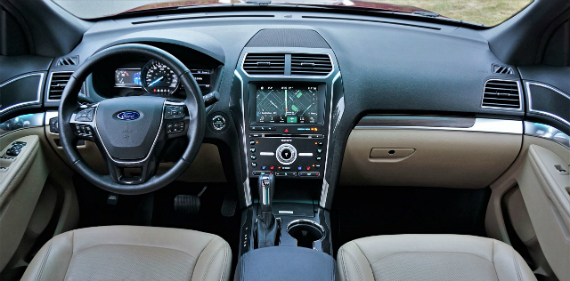
The Explorer Limited also gets 20-inch painted aluminum alloys, albeit my tester was upgraded with $595 worth of 20-inch polished aluminum rims that look sportier, while other standard Limited items include auto on/off low-beam LED headlamps with signature LEDs, fog lights, LED taillights, silver painted front and rear skid plates, additional chromed exterior trim, chromed roof rails, and dual chrome exhaust tips.
You can start the engine remotely and access the Explorer Limited via Ford’s exclusive SecuriCode keyless entry keypad, or use the key fob that allows proximity-sensing access as well as pushbutton ignition, while the rear powered liftgate gets foot-activated hands-free proximity access. Additional Limited features include front and rear bright metal scuff plates, ambient lighting, driver’s memory for the seat, mirrors, powered steering column and power-adjustable pedals, power-folding side mirrors, an auto-dimming rearview mirror, a universal garage door opener, a handy sunglasses holder in the overhead console, a media hub with a smart-charging USB and four 12-volt chargers, a 110-volt household-style power outlet, rear auxiliary climate controls, rear parking sensors, tire pressure monitoring, all the usual active and passive safety equipment including airbags for the front occupants’ knees, plus more for $41,675 plus freight and fees—Limited trim $10k pricier than the $31,660 base Explorer.
My tester was painted in beautiful Ruby Red, a $395 option, plus fitted with a $3,000 301A package that adds auto high beams, rain-sensing wipers, an auto-dimming driver’s-side mirror, multi-contour front seats with active motion, inflatable second-row outboard safety belts, blindspot monitoring with rear cross-traffic alert, lane departure warning, lane keeping assist, and semi-autonomous parallel and perpendicular parking, while my tester also included $1,150 worth of adaptive cruise control with forward collision warning and brake support, plus you might also notice the dual-pane panoramic sunroof above that added $1,695 to the bottom line.
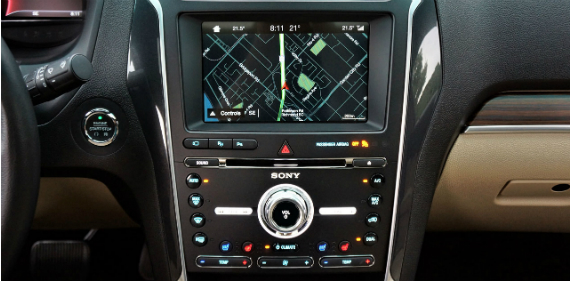
Ford’s naturally aspirated 3.5-liter V6 featuring 290 horsepower and 255 lb-ft of torque, which comes standard with lesser Explorer trim levels that include the base namesake model and second-rung XLT, is strangely an extra-cost option with the Limited. This engine is plenty potent, even more so than a number of the Explorers’ many competitors, but the Limited model’s standard 2.3-liter four-cylinder Ecoboost that’s capable of 280 horsepower and 310 lb-ft of torque is a much more entertaining alternative, unless we’re talking about the 3.5-liter V6 Ecoboost that’s good for 365 horsepower and 350 lb-ft of torque, which is standard with top-tier Sport and Platinum trims.
All utilize a well-proven six-speed automatic transmission, my tester’s even sporting steering wheel paddle shifters, unusual yet very welcome in this three-row SUV class. It’s a smooth gearbox with quick, precise, snappy shifts when in Sport mode, transforming the big SUV into a really sporty ride when mated up to the free-revving 2.3-liter Ecoboost.
I highly recommend the 2.3-liter four for its fuel economy benefits too, as its 18 mpg city, 25 highway and 21 combined rating when hooked up to optional 4WD is by far the most agreeable when compared to the base engine/4WD combination’s 16 city, 23 highway and 19 combined numbers, or the 3.5 Ecoboost’s 16 city, 22 highway and 18 combined rating, while its quite a bit quicker than base powerplant and feels lighter on its feet, so to speak.
All Explorers get a fully independent suspension that’s quite agile as far as car-base SUVs with real off-road capability go, and less weight over the front wheels always helps with handling. This is an SUV that provides good overall balance through tight, fast-paced corners yet hardly compromises in ride comfort, while its highway cruising prowess is also near top of class. It’s quiet too, helped out by active noise reduction, acoustic windshield glass, plenty of sound deadening material all around, and those soft-touch surfaces mentioned earlier, but as noted it can be optioned out to go where few of today’s soft-roaders dare to tread.
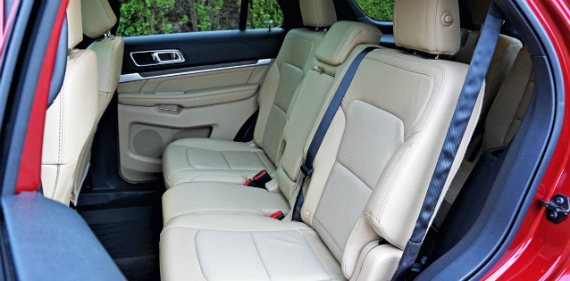
The bottom three Explorer trims make Ford’s $2,150 Intelligent 4WD optional, but upon adding it, which includes a Range Rover-style Terrain Management System, you can select from five backlit pictographs atop a lower console-mounted rotating dial if pavement suddenly turns to trail. The first default image shows the SUV on a flat surface, which makes it the go-to option for pavement, while the next “Mud/Ruts” pictograph showing wheels in trenches and a tree depicts a more aggressive wilderness trail. You should leave the angled SUV and cactus “Sand” image for the finely grained granular stuff, whereas the final swerving tire tracks and snowflake graphic is best for slippery winter conditions and gravel roads. Hill descent control is standard, acting like an engine brake to ease the SUV down steep grades, while standard hill start assist can be useful both on- and off-road.
Speaking of swerving tire tracks, the Explorer comes standard with trailer sway control, aiding its $395 optional Class II and Class III trailering upgrades that can increase towing capacity up to 5,000 pounds.
This leads me to cargo hauling, which is an Explorer forte thanks to a sizable, upright shell and two rows of completely flat-folding rear seatbacks. This is where SUVs win out over most minivans, the latter providing more interior volume overall, but only one manufacturer offering seats that lower into the floor for a flat loading area. Ford replaced its minivan with a series of three-row crossover SUVs based on its D4 platform years ago, and doesn’t appear to have suffered. Certainly cargo space isn’t as grand, but ease of loading long items is much better. Altogether the Explorer offers up 21 cubic feet of gear-toting space behind the third row, much thanks to a deep well that houses the folding rear seats when lowered. It’s expandable to 43.8 cubic feet when that 50/50-split third row is laid flat, while the 60/40-split second row drops down to accommodate up to 81.7 cubic feet of what-have-you if the need arises.
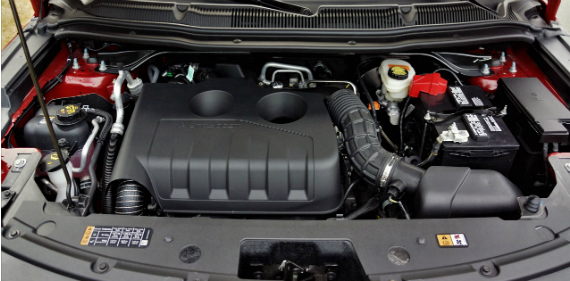
The second and third rows are also quite roomy when upright, this not all that common for rearmost seats in this class despite claims to seven-passenger seating. Most third rows are good for small children at best, but I had no problem climbing past the second-row seat when pushed forward for third-row access, and then getting comfortable in the very back. I wouldn’t recommend it for anyone over five-foot-ten, but kids, pre-teens and smaller adults should be quite content.
Accommodating, comfortable, well equipped, fun to drive, economical, and good looking, the Explorer has a lot to offer American families. It does most everything well, which seems reason enough for its popularity.
Story credits: Trevor Hofmann, American Auto Press Photo credits: Karen Tuggay, American Auto Press Copyright: American Auto Press
